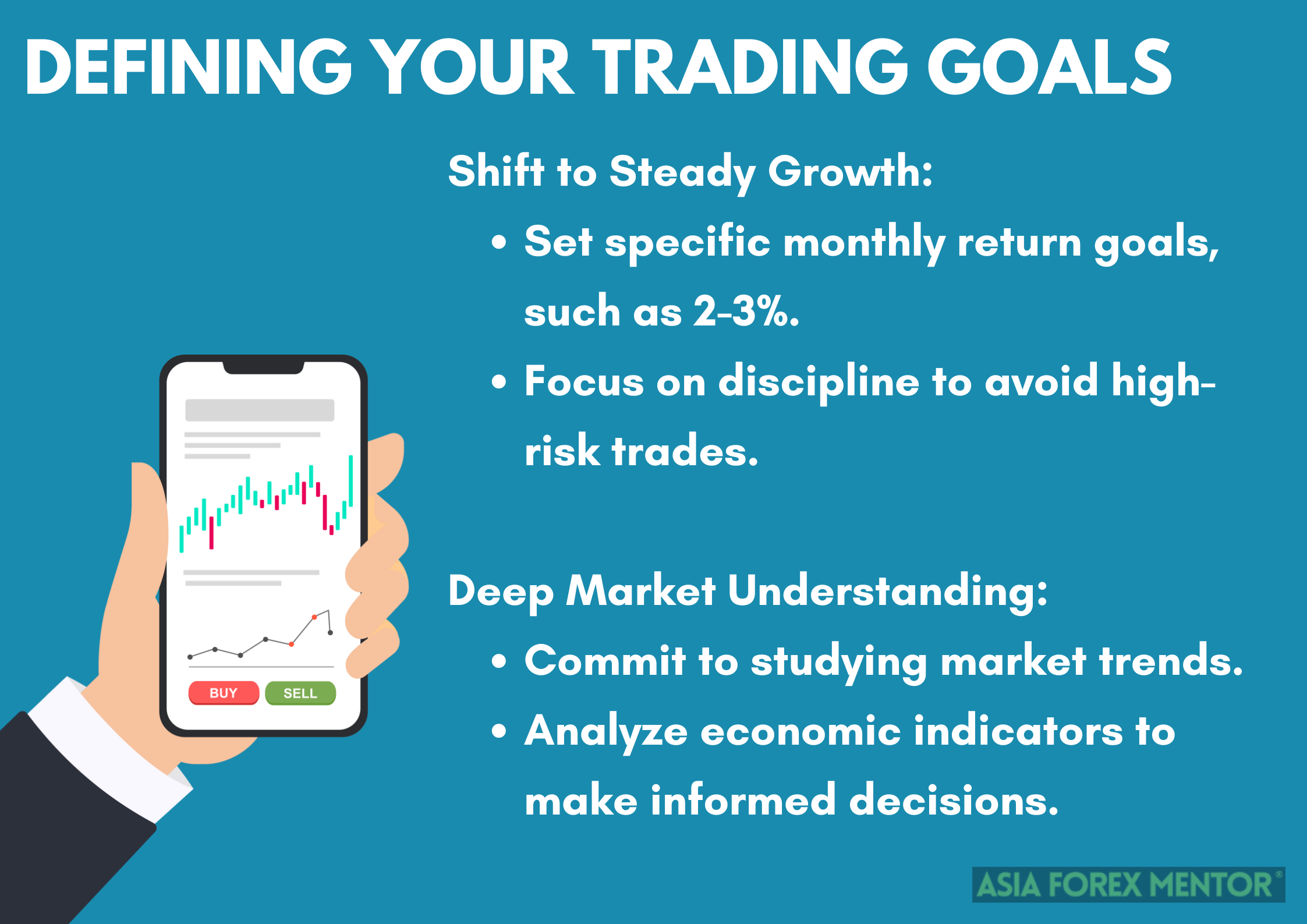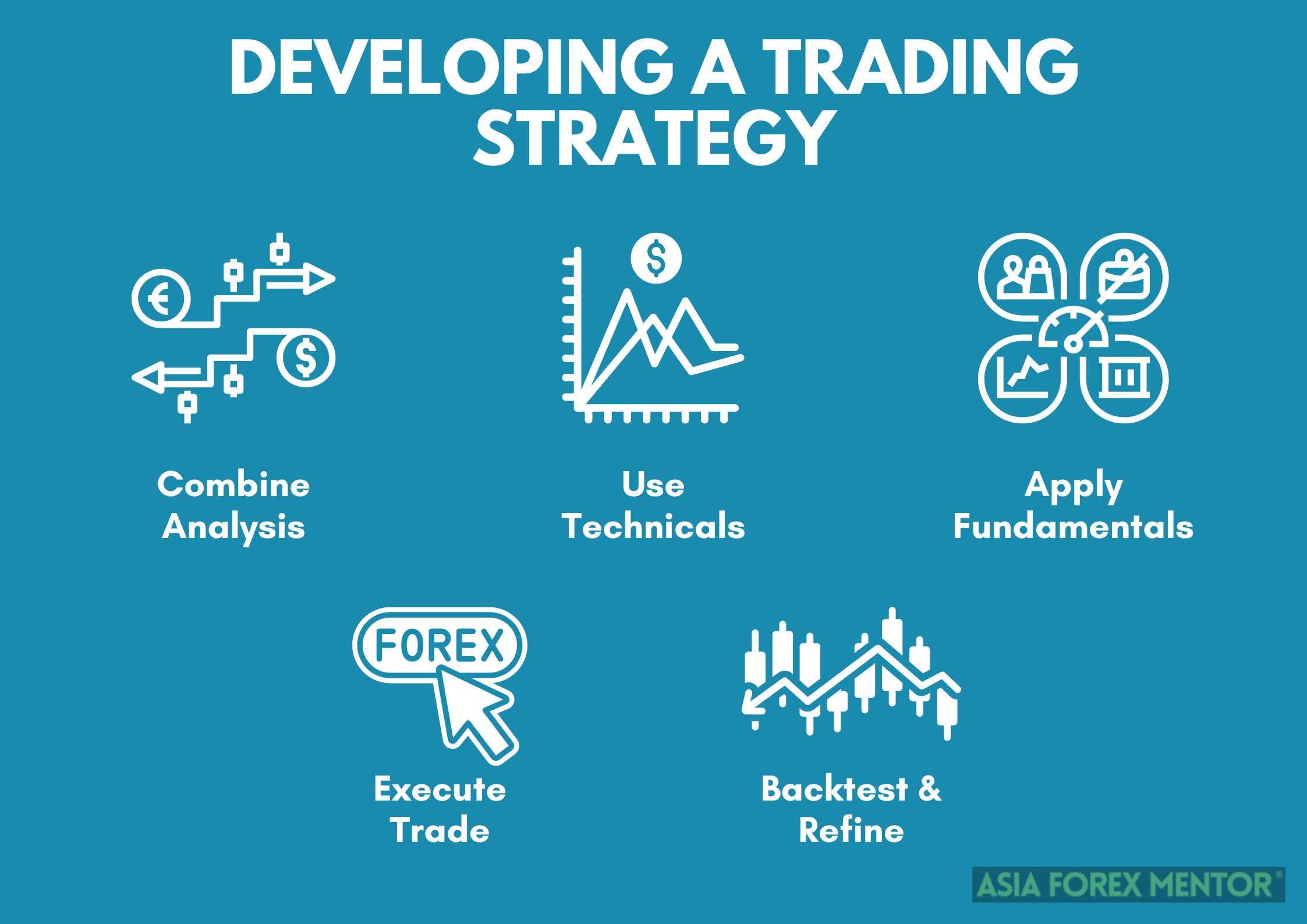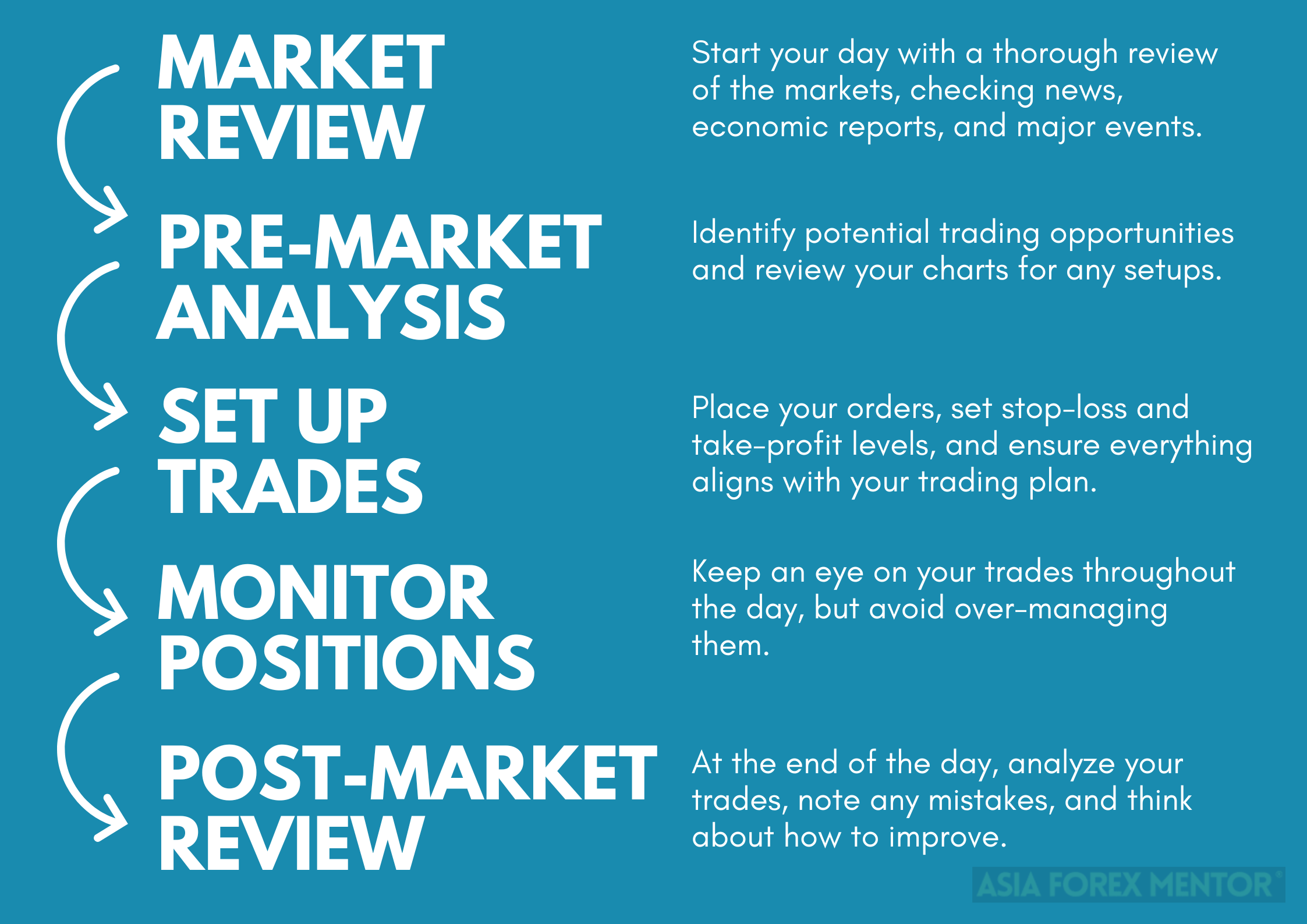When I first got into Forex trading, I was full of excitement, thinking I could jump in, make some trades, and start raking in profits. Reality hit hard when I quickly realized that without a solid plan, trading felt more like gambling than investing. After a few costly mistakes, I knew I needed a well-thought-out trading plan to guide my decisions and keep my emotions in check. Over the years, I’ve refined my approach, and I’m here to share how you can build a successful Forex trading plan that will set you up for long-term success.
Defining My Trading Goals

One of the first things I had to do was set clear, realistic trading goals. When I first started, I was chasing the dream of quick profits. This mindset led me to take unnecessary risks, which almost always ended in losses. I soon realized that I needed to shift my focus from making money fast to growing my account steadily over time.
For example, I set a goal of achieving consistent monthly returns of 2-3%. This might not sound like much, but over time, those returns compound, leading to significant growth in my trading account. Setting this specific target helped me stay disciplined and avoid the temptation of taking high-risk trades that didn’t align with my overall strategy.
Another goal I set early on was to develop a deep understanding of the markets. I knew that if I wanted to be successful, I couldn’t just rely on tips or gut feelings—I needed to learn the ins and outs of Forex trading. So, I committed to spending time every day studying market trends, reading about economic indicators, and analyzing charts. This investment in education paid off, as I became more confident in my trading decisions and better equipped to handle market volatility.
Assessing My Risk Tolerance
Understanding my risk tolerance was another crucial step in developing my trading plan. Early in my trading career, I made the mistake of taking on too much risk. I remember one trade in particular on the EUR/USD pair where I risked about 10% of my account. I was convinced the trade would go my way, but it didn’t, and I lost a significant chunk of my capital.
That experience was a wake-up call. I realized that if I wanted to survive in the Forex market, I needed to protect my capital at all costs. So, I established a rule to never risk more than 2% of my account on any single trade. This rule has been a game-changer for me. It’s allowed me to stay in the game, even when trades don’t go as planned, and it’s kept me from making impulsive decisions out of fear or greed.
Assessing your risk tolerance isn’t just about setting a percentage to risk per trade. It’s also about understanding your emotional response to losing trades. For me, I found that when I risked too much, I couldn’t think clearly. I’d either panic and close trades too early, or I’d stubbornly hold onto losing positions, hoping they’d turn around. By lowering my risk, I was able to think more logically and stick to my trading plan, even when things didn’t go my way.
Choosing My Trading Style
Finding the right trading style was another important part of building my trading plan. At first, I tried day trading because I liked the idea of making quick profits. But I soon realized that the constant screen time and rapid decision-making required for day trading just wasn’t for me. I found it stressful and exhausting, and it led to burnout rather than success.
After some trial and error, I discovered that swing trading suited me much better. Swing trading involves holding positions for several days or even weeks, allowing me to take advantage of medium-term price movements. This style gave me the time to thoroughly analyze the markets and make informed decisions without the pressure of having to constantly monitor my trades.
For example, during the Brexit negotiations, the markets were incredibly volatile. By using a swing trading approach, I was able to capture significant price movements in the GBP/USD pair without getting caught up in the day-to-day noise. This style also allowed me to balance my trading with other commitments, making it a sustainable long-term strategy.
Another key to choosing the right trading style is aligning it with your personality. If you’re someone who thrives on fast-paced environments, day trading might be a better fit. But if you prefer taking your time to analyze and make decisions, swing trading or position trading could be more suitable. The important thing is to find a style that matches your temperament, so trading becomes something you enjoy rather than a source of stress.
Developing My Trading Strategy

With my goals and trading style in place, the next step was developing a consistent trading strategy. A trading strategy outlines the specific conditions under which you’ll enter and exit trades, as well as how you’ll manage those trades once they’re open. For me, this meant combining both technical and fundamental analysis to identify high-probability trading opportunities.
On the technical side, I rely heavily on moving averages and the Relative Strength Index (RSI) to help me spot trends and potential reversal points. For instance, I often look for situations where the price crosses above or below a key moving average, which can indicate a potential change in trend. I also use the RSI to gauge whether a currency pair is overbought or oversold, helping me avoid entering trades at the wrong time.
However, I don’t rely solely on technical indicators. I’ve found that fundamental analysis is equally important in understanding the broader market context. For example, I always pay attention to economic indicators like interest rate decisions, employment data, and geopolitical events. These factors can have a significant impact on currency movements, and incorporating them into my strategy has helped me make more informed trading decisions.
One trade that stands out in my memory is a USD/JPY trade where I used a combination of technical and fundamental analysis. I noticed that the price was hovering around a key moving average, and I knew that the Bank of Japan was scheduled to announce its interest rate decision the following day. Based on my analysis, I anticipated that the yen would weaken if the Bank of Japan maintained its dovish stance, so I entered a long position on USD/JPY. The trade worked out exactly as planned, and I was able to close it with a solid profit.
Developing a trading strategy isn’t just about choosing indicators—it’s about understanding how different factors interact and using that knowledge to your advantage. It’s also about testing your strategy and being willing to make adjustments as needed. I’ve spent countless hours backtesting different strategies to see how they perform under various market conditions. This process has helped me refine my approach and build confidence in my trading decisions.
Implementing Risk Management Techniques
If there’s one thing I’ve learned in my trading career, it’s that risk management is non-negotiable. Without proper risk management, even the best trading strategy can lead to disaster. That’s why I’ve made risk management a central part of my trading plan.
One of the first risk management techniques I implemented was setting stop-loss orders on every trade. Early in my trading journey, I made the mistake of not using stop-losses, thinking I could manually close trades if they went against me. This approach led to some significant losses, as I often hesitated to close losing trades, hoping they would turn around. Now, I set my stop-loss orders as soon as I enter a trade, and I stick to them no matter what.
In addition to stop-loss orders, I also pay close attention to position sizing. Position sizing refers to the amount of capital you allocate to each trade. By carefully controlling my position sizes, I’ve been able to manage my risk more effectively and avoid overexposing my account to any single trade. I typically risk no more than 2% of my account on each trade, which gives me the flexibility to weather losing streaks without depleting my capital.
Diversification is another key aspect of my risk management strategy. Rather than putting all my eggs in one basket, I spread my trades across different currency pairs and even other asset classes when appropriate. For example, during the early days of the COVID-19 pandemic, many currency pairs became highly volatile, making it difficult to predict market movements. By diversifying my trades, I was able to mitigate some of the risks associated with this volatility and protect my overall portfolio.
Another important risk management technique I use is trailing stops. Trailing stops allow me to lock in profits as a trade moves in my favor while still giving the trade room to breathe. For example, if I enter a trade at 1.2000 and the price moves up to 1.2100, I might set a trailing stop at 1.2050. This way, if the price reverses, I still walk away with a profit, but if the trend continues, I can capture even more gains.
Implementing these risk management techniques has been crucial to my success as a trader. They’ve helped me protect my capital, manage my emotions, and stay disciplined in the face of market volatility.
Creating a Trading Routine

A solid trading plan isn’t complete without a daily routine that keeps you organized and focused. Over the years, I’ve developed a routine that works for me, and it’s been a game-changer in terms of consistency and discipline.
My day starts with a thorough review of the markets. I check the latest news, economic reports, and any major events that could impact the currencies I’m trading. This pre-market analysis helps me identify potential trading opportunities and set up my trades for the day. I also take a look at my charts to see if any of my predefined setups are in play.
Once I’ve done my analysis, I set up my trades. This includes placing orders, setting stop-loss and take-profit levels, and ensuring that everything aligns with my trading plan. During the trading day, I monitor my positions but avoid micromanaging them. I’ve learned that constantly watching the markets can lead to overtrading and impulsive decisions, so I stick to my plan and let the trades play out.
At the end of the trading day, I always conduct a post-market review. This is where I go over the day’s trades, analyzing what went well and what didn’t. I take note of any mistakes I made and think about how I can improve. This daily review has been crucial in helping me refine my strategy and maintain consistency in my trading.
Keeping a Trading Journal
One of the most valuable tools in my trading arsenal is my trading journal. Early in my trading career, I didn’t see the point of keeping a journal, but once I started, I quickly realized how powerful it could be. Documenting every trade, including the reasons for entering and exiting, the outcome, and any lessons learned, has allowed me to identify patterns in my behavior and decision-making process.
For example, I noticed that I was more likely to take unnecessary risks after a winning streak, which often led to losses that could have been avoided. By regularly reviewing my journal, I was able to adjust my approach, focusing on quality over quantity and avoiding the pitfalls of overconfidence.
My trading journal also helps me stay accountable. It’s easy to make excuses or rationalize poor decisions, but when everything is written down, there’s no hiding from the truth. This level of accountability has been key to my growth as a trader.
Regularly Reviewing and Adjusting My Plan
Finally, I’ve learned that a trading plan is not something you create once and then forget about. The Forex market is constantly changing, and your plan needs to evolve with it. I regularly review my plan, especially after significant market events or changes in my personal goals, to ensure it remains relevant and effective.
For instance, after the market volatility during the early 2022 inflationary period, I realized that my plan needed to account for the increased uncertainty and potential for sharper market movements. I adjusted my strategy to include more conservative risk management techniques and a greater focus on fundamental analysis, which allowed me to stay ahead of the curve and continue trading successfully.
This continuous review process has been essential in keeping my trading plan aligned with both my goals and the current market conditions. It’s a reminder that in trading, as in life, adaptability is key.
Conclusion
Building a successful Forex trading plan is about creating a framework that works for you and evolves with your trading journey. By defining clear goals, understanding your risk tolerance, choosing the right trading style, and implementing solid risk management techniques, you can create a plan that not only guides your trading but also helps you navigate the inevitable ups and downs of the market.
The key is consistency and discipline. A well-constructed trading plan will give you the confidence to stick to your strategy, even when the markets get tough. And remember, it’s not about being perfect—it’s about learning from your mistakes, making adjustments, and continuously improving your approach. With the right plan in place, you’ll be better equipped to achieve long-term success in the dynamic world of Forex trading.
Also Read: The Top 7 Technological Challenges in Forex Trading









